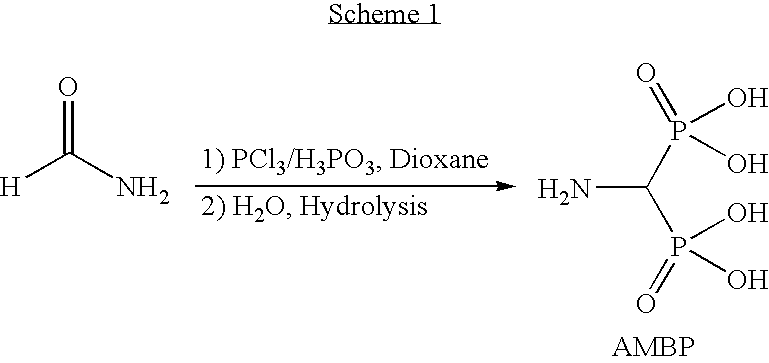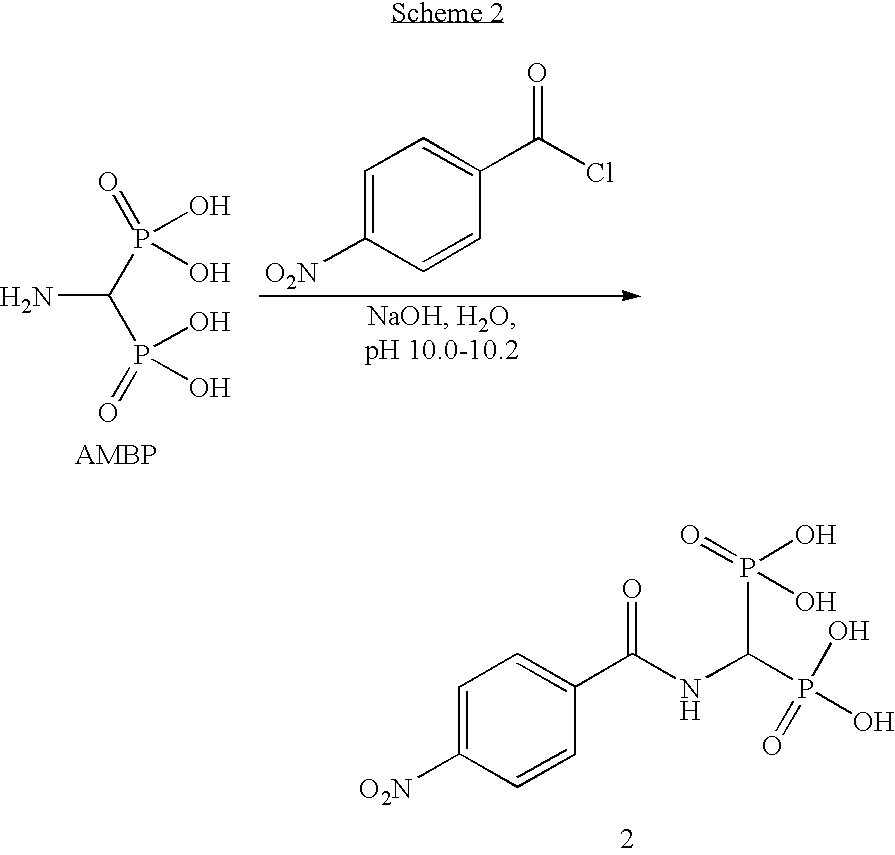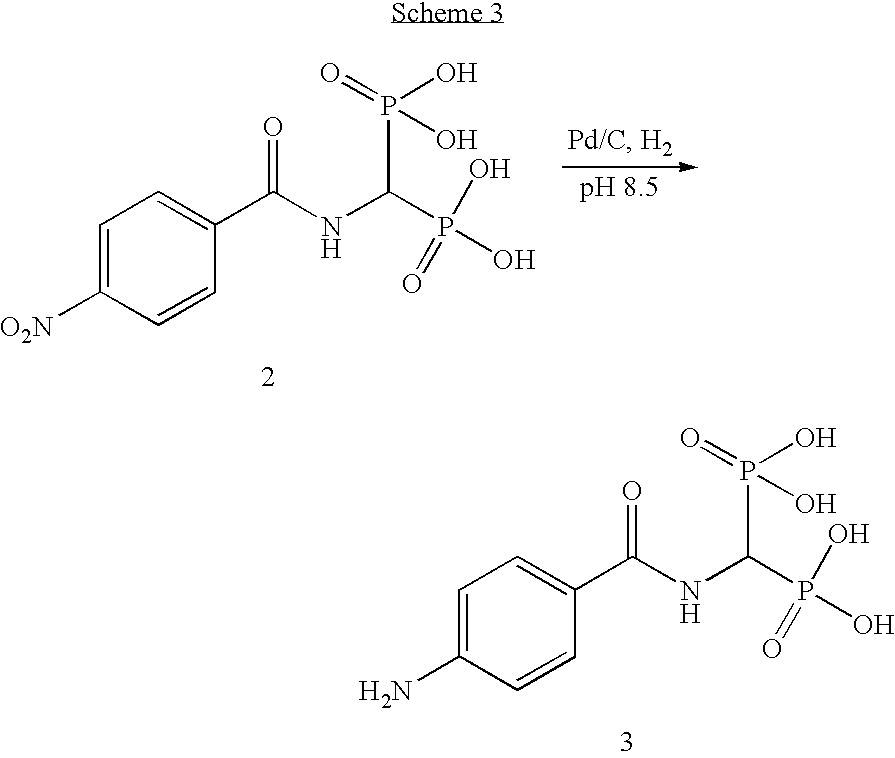Modified pigments having reduced phosphate release, and dispersions and inkjet ink compositions therefrom
a technology of modified pigments and pigments, which is applied in the field of modified pigments having reduced phosphate release, and dispersions and inkjet ink compositions therefrom, can solve the problems that methods relying on the inherent functionality of a pigment's surface cannot be applied generally, and pigments alone are not readily dispersed in liquid vehicles
- Summary
- Abstract
- Description
- Claims
- Application Information
AI Technical Summary
Problems solved by technology
Method used
Image
Examples
examples 1-4
[0041]The following examples describe the preparation of modified pigments of the present invention comprising carbon black having attached at least one organic group. For Example 1, the organic group comprises a group having the formula —CO—NH—CH(PO3H2)2 or salts thereof. For Example 2, the organic group comprises a group having the formula —SO2—NH—CH(PO3H2)2 or salts thereof.
example 1
[0042]Aminomethylenebisphosphonate (AMBP) was prepared as shown in Scheme 1 below using one of the following methods.
Method A
[0043]Phosphorus acid (750 g, 9.15 moles, 1.6 equiv) was charged into a reactor provided with mechanical stirrer, condenser with a guard tube, water condenser, thermometer and addition funnel under a nitrogen atmosphere. To this was added 1,4-dioxane (1.5 L) followed by formamide (250 g, 5.56 moles, 1 equiv) with stirring. The nitrogen atmosphere was removed, and the mixture was warmed to 60° C. for 1 hour and then cooled back to 20° C. Phosphorus trichloride (1.5 L, 17.19 moles, 3.1 equiv) was added to the mixture over a period of 3 hours, and the resulting mixture was then heated to 60° C. for 3 hours. During the heating, the reaction mixture turned into a white sticky mass, which was difficult to stir towards the end. Heating and stirring was discontinued, and the reaction mixture was allowed to stand at room temperature overnight. After removing the liquid...
example 2
[0054]Compound 4 was prepared from AMBP using the procedure described in Example 1, with the exception that 4-nitrobenzenesulfonyl chloride was used in place of 4-nitrobenzoyl chloride. The reaction is shown in Scheme 4 below.
[0055]Thus, to a suspension of 375 g of AMBP (1.96 mmol) in 3 L deionized water was added a 10 N NaOH solution (600 ml). The addition was done rapidly in order to dissolve the AMBP at ambient temperature (reaction temperature was observed to increase to 40° C.). Then, the pH of the reaction mixture was adjusted to 9.9 by using a 10 N NaOH solution. 4-Nitrobenzenesulfonyl chloride was added to this portion-wise over a period of 1.5 hours, maintaining the pH at 9.75-9.9 by adding a 10 N NaOH solution as needed. The reaction temperature was observed to increase to 48-50° C. at the end of the addition, and stirring was continued for another 30 minutes at this temperature until the pH was steady at 9.8. 1H NMR analysis of the mixture showed 52% conversion. The react...
PUM
| Property | Measurement | Unit |
|---|---|---|
| particle size | aaaaa | aaaaa |
| particle size | aaaaa | aaaaa |
| particle size | aaaaa | aaaaa |
Abstract
Description
Claims
Application Information
 Login to View More
Login to View More - R&D
- Intellectual Property
- Life Sciences
- Materials
- Tech Scout
- Unparalleled Data Quality
- Higher Quality Content
- 60% Fewer Hallucinations
Browse by: Latest US Patents, China's latest patents, Technical Efficacy Thesaurus, Application Domain, Technology Topic, Popular Technical Reports.
© 2025 PatSnap. All rights reserved.Legal|Privacy policy|Modern Slavery Act Transparency Statement|Sitemap|About US| Contact US: help@patsnap.com



